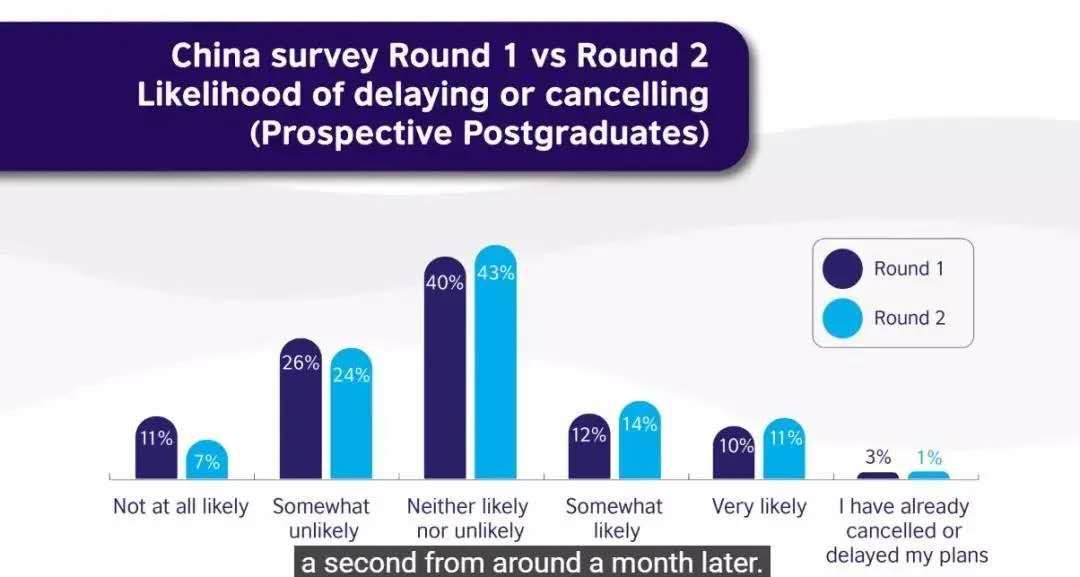托福听力考多少分总成绩才有望破百?如果按照平均分来算,听力至少要达到25分,但因为托福听力考试是客观题,所以分数要稍高一些才更有希望。下面小编就和大家分享托福听力高分练习方法,来欣赏一下吧。
托福听力高分练习方法
一.托福听力多少分总成绩有望破百
根据熊老师收集的近年分数数据分析来看,在听力单科上,拿到的分数应该在27-30分。原因是听力的能力还需要支撑口语和写作的综合部分,几项一起努力才能突破100分这个坎。如果听力达到30分,总分一般能到105或者110分以上。
那么如果要把听力练习到27-30分,我们应该做哪些准备?
二.托福听力高分练习方法
1.听力词汇基础要打好
单词是语篇理解的根基,背单词的过程中一定要对单词发音做到非常熟悉,必须能在听到单词发音的3秒之内说出单词意思,才算是背熟这个单词。
如果对于所背诵的单词只能做到会写会认,但是无法通过发音听辨出来,在听力考试中如果遇到,是不能顺利识别的。从而会在听力理解的过程中暂停下来去回忆单词的意思,形成语篇理解的空白区。平时同学们应该用听写的方式检测自己是否背熟单词。
此外,一定要积累大量的学科词汇。当然,很多同学会觉得很费力的是,这些学科词汇太过于生僻,日常生活里面根本用不到,太容易忘记了!
那么,如果同学们想要避免单词背完之后容易忘的问题,可以按照单词背诵和学科分类练习相结合的方式来做听力。
2.不同基础备考方法不同
对于听力起点分数在16分以下的同学,主要的问题还是在基础不够扎实上。对于听力材料中词汇和表达的处理速度过慢,影响了全篇的理解。
给这个阶段的同学的建议是:
先拿短语篇来做逐句精听,打好听力基础。短语篇可以选择老托福的93篇,科学美国人SSS,也可以选择官方真题Official真题当中的对话理解,这些总时长在3分钟以内的音频都是很好的素材。
逐句精听之后,及时做一个梳理对比,把原文中没有被听出来的信息做一下分析,看看是词汇不认识还是语音现象的问题。如果是词汇问题就做个积累,记下来多读多背几次;如果是语音现象问题,就到对应的出处多听几次。精听完了之后再做一遍看稿跟读,模仿语音语调语速。
对于听力起点分数在16-23分的同学,主要的问题是对于长句子和具体细节层次的处理速度过慢。全文能听懂梗概和框架,但是细节含混不清。
给这个阶段的同学的建议是:
用长语篇来做复述和听译练习,提高对于语篇中细节层次的理解准确度和详细程度。长语篇在选材上选取官方真题Official真题中的学术讲座即可。
复述练习是听英文说英文,而听译练习是听英文说中文。两个不同的练习达成的目标有所不同。复述练习可以训练提高对所听信息还原的准确度,可以运用在综合口语或者综合写作的听力训练中。听译练习可以训练提高听力分项中学术讲座的长句子信息的理解速度。
以上两种练习方式都可以循序渐进地先从小切片开始,比如每个句子为单位进行复述或者听译,然后逐步扩大到每1分钟左右为单位,甚至是每2分钟左右为单位来练习。在这个过程中可以同时训练自己记笔记的速度和整理加工信息的能力。
对于听力起点分数在24分以上的同学,主要的问题是在细节上会有一些信息的遗漏。但是考试所考到的细节都是关键细节,所以出现细节的遗漏主要还是因为对于考点的预判不够准确。一定要多关注语篇的整体篇章结构和内容展开的过程,要训练自己对考点的预判能力。
给这个阶段的同学的建议是:
按照不同的学科来分组梳理语篇结构(相同学科的文章结构特点往往是类似的),并做整篇的复述练习。通过比对原文之后,分析判断所遗漏的信息是否为考点或者与原文中心思想密切相关的内容,来进一步加深对信息重要性的判断。
此外,如果想提高自己对于语速的适应能力,可以在平时训练官方真题Official真题的时候将语速调整为1.2倍(主要是官方真题Official30以前的素材),这样在考试的时候会有更多时间思考和反应,并及时对考点进行预判。
3.创造英语听力环境
同学们课余可以多做一些日常的泛听,拓宽自己知识面的同时,可以加强自己对于连读等语音现象以及长句子的理解能力,从而进一步对快节奏的语篇内容提高反应速度。
从能力上讲,听力理解水平的提高其实是蕴含在每天的日常训练中潜移默化提升的,由量变引发的质变。各位同学在能力提升的各个阶段虽然不可跨越,但是通过我们的努力可以尽量缩短各个阶段的过程。
如果托福总成绩想要考到100分,那么听力单科成绩要尽量达到27分以上,这样高分才更有保障。托福听力高分离不开多听多练,大家要根据自己的听力基础制定具体的提升攻略,在练习过程中打好词汇基础,创造英语听力环境,这样才更有希望拿到托福听力高分。
2020托福听力练习:气候变化影响美西南部针叶林
As you sit round the Christmas tree, consider the TLC you give O Tannenbaum:plenty of water and a relatively comfortable climate.
Wouldn't want to dry out the tree, after all.
Now consider that in the house we all live in—the planet—we're hardly giving the same courtesy to your Christmas tree's wild cousins.
(Who, I might add, are actually still alive.)
As the planet warms, droughts are getting even drier—and they're getting hotter too.
In fact it's getting so bad that researchers are now forecasting that conifers in the arid southwestern United States could be completely wiped out by the end of the century.
No more pinyon pines, ponderosas or junipers. No more forests.
"It's definitely a distressing result for all of us.
None of us want to see this happen.
It's a bummer, honestly."
Sara Rauscher, a climate scientist and geographer at the University of Delaware.
She and her colleagues gathered data on how real-world evergreens in the southwest respond to drought and heat—they basically starve, unable to carry on photosynthesis or transport water.
The researchers then combined those physiological data with a half dozen projections of how climate change might proceed.
"But no matter what model we used, we always saw tree death."
Specifically, 72 percent of the trees dead by 2050, and a near-complete annihilation by the year 2100.
The results are in the journal Nature Climate Change.
But we'll always have Paris, right?
"Even if we used a scenario similar to what the Paris accords have agreed upon—so limiting global warming to 2 degrees—we still saw widespread die-off.
It happened later in the century, but it still happened."
That said, the study does not account for trees'ability to adapt, or whether new populations could find friendlier climes.
That is, whether conifers in the southwest can pull up roots fast enough to beat climate change.
As you sit round the Christmas tree, consider the TLC you give O Tannenbaum: 当你围着圣诞树坐下,想着对它的细心呵护:
plenty of water and a relatively comfortable climate. 足够的水份及相对舒适的气候条件。
Wouldn't want to dry out the tree, after all. 至少你不会想到这棵树会干枯而死。
Now consider that in the house we all live in the planet we're hardly giving the same courtesy to your Christmas tree's wild cousins. 现在想想我们居住的房子,我们所生活的地球 我们从未对它们有对圣诞树这般的礼遇。
Who, I might add, are actually still alive. 补充一下,如果它们实际上还活着的话。
As the planet warms, droughts are getting even drier and they're getting hotter too. 随着地球变暖,干旱问题变得越来越严重 也越来越炎热。
In fact it's getting so bad that researchers are now forecasting that conifers in the arid southwestern United States could be completely wiped out by the end of the century. 实际上,情况变得越来越糟糕,以致于研究人员现在预测美国西南部的针叶树可能会在本世纪末灭绝。
No more pinyon pines, ponderosas or junipers. No more forests. 那时候将不会有松树、黄松木及杜松。而且森林也将不复存在。
"It's definitely a distressing result for all of us. “对我们来说这绝对是令人心痛的结果。
None of us want to see this happen. 任谁都不想看到这种情况发生。
It's a bummer, honestly." 坦白说,这绝对是令人不愉快的经历。
Sara Rauscher, a climate scientist and geographer at the University of Delaware. 特拉华大学气候学家及地质学家萨拉劳斯尔说道。
She and her colleagues gathered data on how real-world evergreens in the southwest respond to drought and heat they basically starve, unable to carry on photosynthesis or transport water. 萨拉和她的同事们收集了美国西南部常青树如何应对干旱及树木在失去养分不能够进行光合作用运输水分的高温数据。
The researchers then combined those physiological data with a half dozen projections of how climate change might proceed. 研究人员将这些树木的生理数据同未来气候变化的预测进行结合。
"But no matter what model we used, we always saw tree death." “但无论我们使用何种模型,得出的结论都是树木会面临灭顶之灾。
Specifically, 72 percent of the trees dead by 2050, and a near-complete annihilation by the year 2100. 确切地说,到2050年72%的树木会死亡;2100年所有的树木都会消失。
The results are in the journal Nature Climate Change. 这项研究已在《气候变化》期刊上发表。
But we'll always have Paris, right? 但我们还有巴黎气候变化协议。
"Even if we used a scenario similar to what the Paris accords have agreed upon so limiting global warming to 2 degrees we still saw widespread die-off. 即使我们运用到巴黎气候变化协议所规定的类似场景 将全球变暖的温度控制在2度,仍然出现树木大面积死亡。
It happened later in the century, but it still happened." 这种现象会在本世纪末出现,仍旧无法避免。
That said, the study does not account for trees'ability to adapt, or whether new populations could find friendlier climes. 也就是说,这项研究没有将树木的适应能力或未来能否找到更适合自身生长地的新品种纳入考量。
That is, whether conifers in the southwest can pull up roots fast enough to beat climate change. 美国西南部的针叶林是否能够足够快的转移地点应对气候变化。
2020托福听力练习:北极苍蝇面临的未来
The Greenland High Arctic is a bare, sparse place. Rather than tall trees, it has tundra—ground hugging vegetation—and rugged, Lord-of-the-Rings-style vistas. "Well I don't know, it's not exactly New Zealand, but kind of similar landscape."
Mikko Tiusanen, an ecologist at Helsinki University in Finland. "The winter season is like six, seven months. So everything basically happens during the short summer season." Including the white-yellow bloom of mountain avens, a hardy arctic shrub. "Even though it's small it can be over 100 yrs old. It's pretty good at surviving harsh conditions."
Tiusanen and his colleagues set out to census which of the many local insects visit mountain avens by summer, and help with pollination. So they planted 2100 sticky flower lookalikes, as traps, and identified stuck visitors by their DNA.
Two-thirds of all local insect species visited. But it was one particular fly, a relative of the humble housefly, that showed up most often in those spots where the tundra shrubs had successfully set seed. Meaning more flies appeared to be a good thing for the avens. The study appears in the Proceedings of the Royal Society: B.
Here's the bad news: a 2013 study found that the Arctic flowering season is shortening. The numbers of fly pollinators is down, as is the the number of visits by these fly pollinators. Which could be bad for mountain avens—and beyond. "One could expect that also the other pollinators and flower visitors visiting the mountain avens could get more uncommon and even become extinct in the long run." Meaning "shoo fly" could spell trouble for the life of the tundra.
The Greenland High Arctic is a bare, sparse place. 格陵兰高北极地区是一个荒芜又稀疏的地方。
Rather than tall trees, it has tundra—ground hugging vegetation—and rugged, Lord-of-the-Rings-style vistas. 那里没有高大的树木,有的是苔原、贴地的植被和崎岖的、类似魔戒风格全景的地方。
"Well I don't know, it's not exactly New Zealand, but kind of similar landscape." “嗯,我不清楚,那里不完全是新西兰,而是一种类似的景观。”
Mikko Tiusanen, an ecologist at Helsinki University in Finland. 米可·蒂乌萨宁是芬兰赫尔辛基大学的生态学家。
"The winter season is like six, seven months. “冬季大约有六七个月那么长。
So everything basically happens during the short summer season." 所以基本上一切都发生在时间很短的夏季里。”
Including the white-yellow bloom of mountain avens, a hardy arctic shrub. 包括耐寒的北极灌木水杨梅盛开出黄白色的花朵。
"Even though it's small it can be over 100 yrs old. “虽然看上去很小,但它的年龄已经超过了100岁。
It's pretty good at surviving harsh conditions." 它非常擅于在恶劣的环境条件中存活下去。”
Tiusanen and his colleagues set out to census which of the many local insects visit mountain avens by summer, and help with pollination. 蒂乌萨宁和他的同事开始调查在夏季“到访”水杨梅的当地昆虫,这些昆虫会帮助授粉。
So they planted 2100 sticky flower lookalikes, as traps, 所以他们种植了2100株相似的粘纸花作陷阱,
and identified stuck visitors by their DNA. 通过DNA来识别被粘住的“到访者”。
Two-thirds of all local insect species visited. 有三分之二的当地昆虫物种“到访”过水杨梅。
But it was one particular fly, a relative of the humble housefly, 其中有一种特别的苍蝇,这种苍蝇是家蝇的近亲,
that showed up most often in those spots where the tundra shrubs had successfully set seed. 它们最常出现的地方是成功播种的冻原灌木区。
Meaning more flies appeared to be a good thing for the avens. 这表明,对水杨梅来说,更多的苍蝇可能是件好事。
The study appears in the Proceedings of the Royal Society: B. 这项研究发表在《英国皇家学会学报:B》上。
Here's the bad news: a 2013 study found that the Arctic flowering season is shortening. 这里还有一个坏消息:一项2013年进行的研究发现,北极的花期正在逐渐缩短。
The numbers of fly pollinators is down, as is the the number of visits by these fly pollinators. 授粉苍蝇的数量下降,“到访”的授粉苍蝇数量也出现下降。
Which could be bad for mountain avens—and beyond. 这对水杨梅和其他植物来说可能是坏消息。
"One could expect that also the other pollinators and flower visitors visiting the mountain avens could get more uncommon “可以想象,其他授粉昆虫和到访水杨梅者可能会越来越少,
and even become extinct in the long run." 从长期来看甚至可能会绝迹。”
Meaning "shoo fly" could spell trouble for the life of the tundra. 这表明“赶苍蝇”这种行为可能为冻土地带的生活带来麻烦。
2020托福听力高分练习方法
上一篇:托福听力听写法怎么练习
下一篇:2020托福听力备考五大要素






